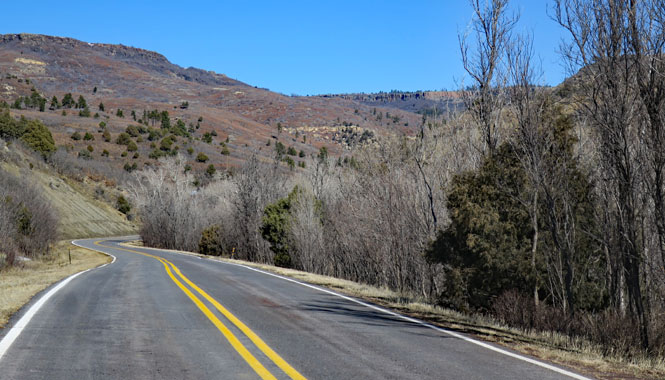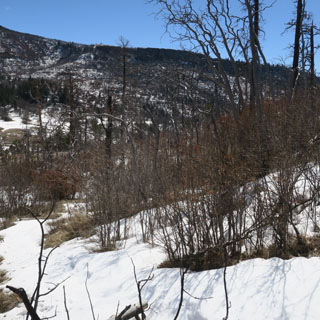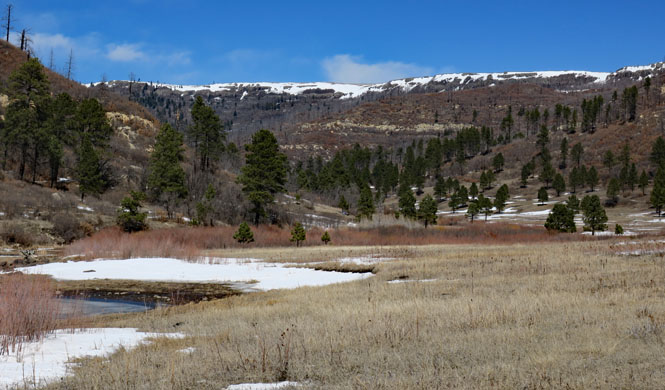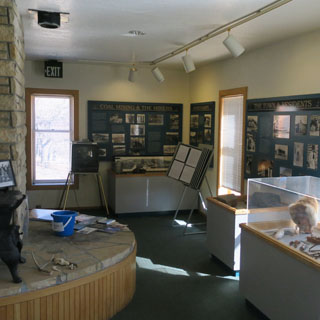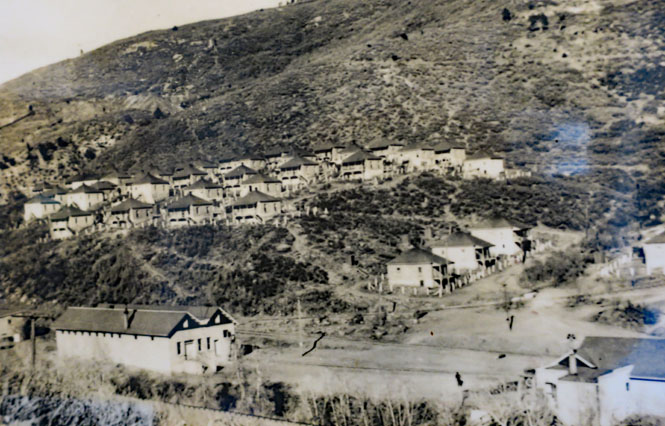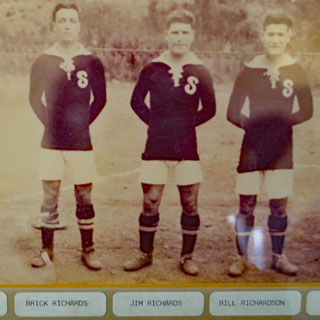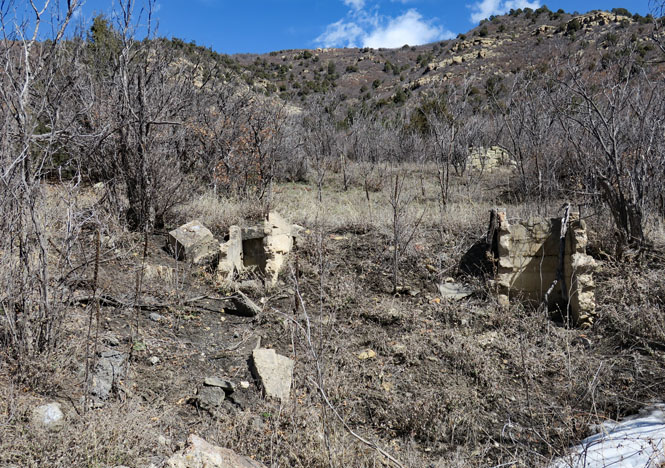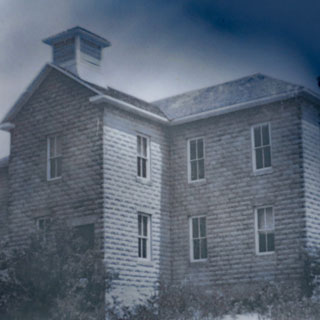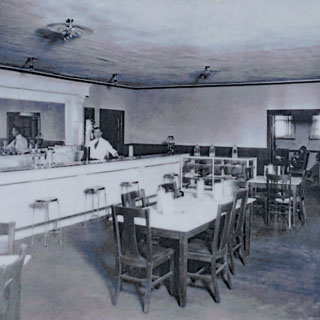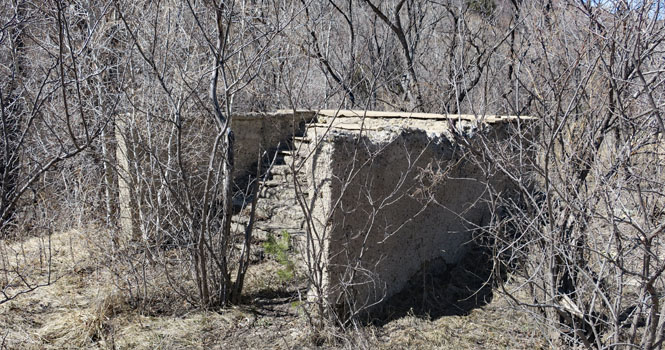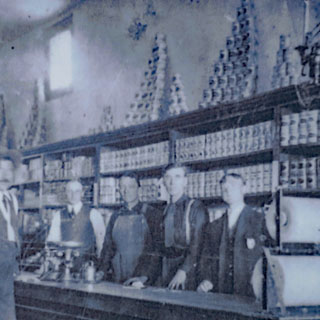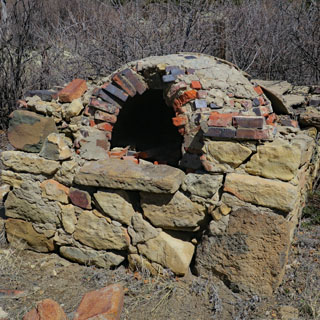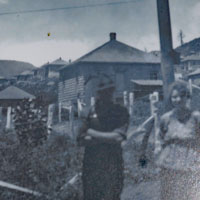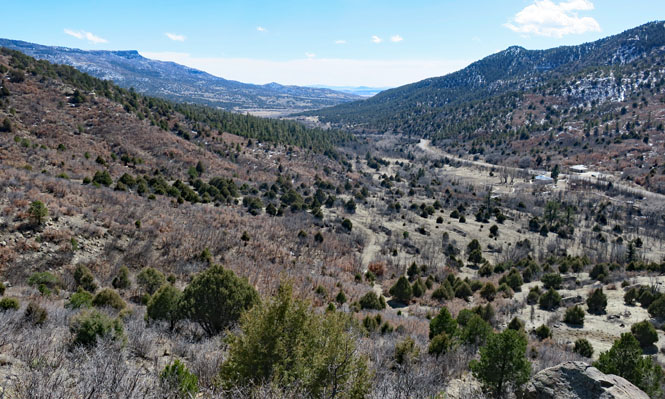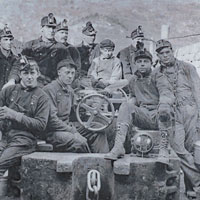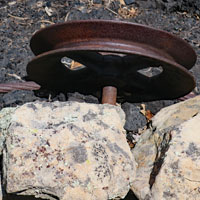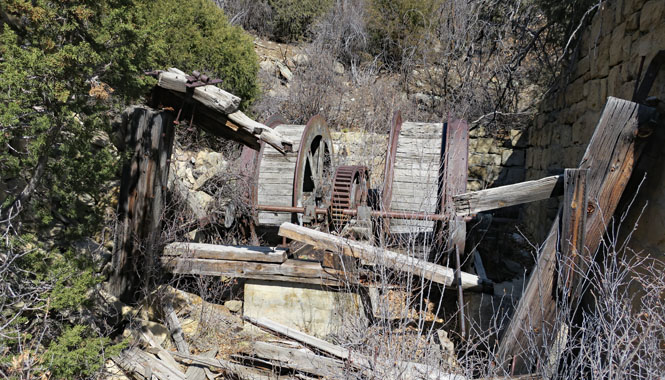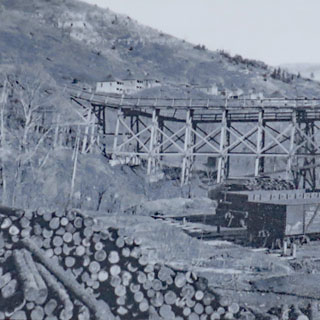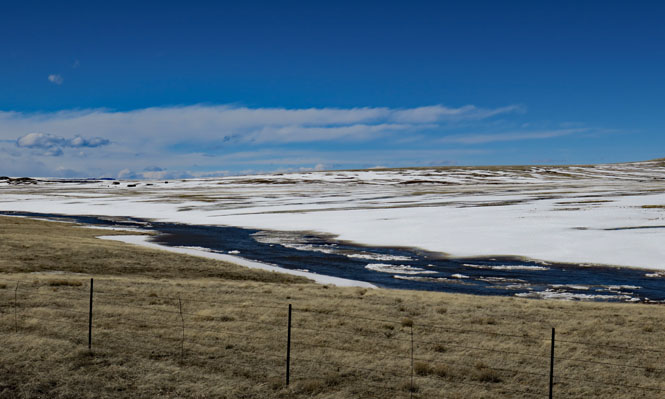March 7, 2019
Sugarite Canyon is not far east of the town of Raton (there's some uncertainty as to the source of the name). Chicorica Creek flows through the canyon and has always been a source of water for Raton.
The town of Sugarite was established in 1912 as a company-town to serve the coal mine, which had begun operations in 1894. The mine (and therefore the town) lasted until 1941--around 500 people lived here. Once the town was quit, the company moved many of the structures to the next coal mine; there's very little left.
 New Mexico
New Mexico
 Sugarite Canyon State Park is at the end of NM-526. Keep going
north and you'll cross the state line to Colorado in just a few miles (where
the pavement ends).
Sugarite Canyon State Park is at the end of NM-526. Keep going
north and you'll cross the state line to Colorado in just a few miles (where
the pavement ends).
Lake Maloya is iced over, but signs were up warning that ice fishing was too dangerous under today's conditions.
I tried a couple of hiking trails, but the snow was too much, both for easy walking and for finding the trail.
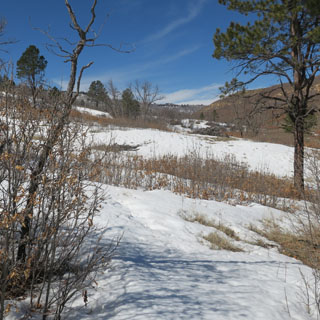
Chicorica Creek at the Colorado/New Mexico line.
The visitor's center is the only remaining building of Sugarite (save a large mule barn, not far north from here). Imagine many homes, looking just like this one.
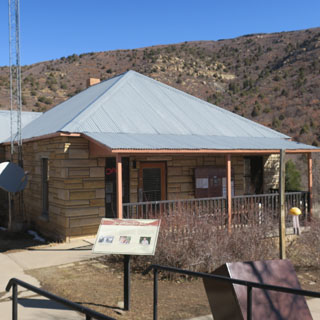
An old view taken from about where the visitor's center is today. The soccer field would be down in that flat area.
A wide-angle panoramic. The two-story building towards the right is the school.
Baseball and soccer were the two sports--and evidently the Sugarite teams were very good. Judging by the names, they had many players (all miners) from England and Wales. They played teams from the surrounding towns.
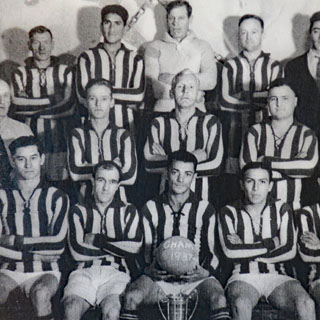
Sugarite School. There is virtually nothing remaining.
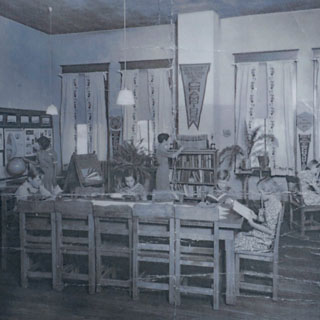
Sugarite Clubhouse. Apparently, the coal company built a clubhouse in all their company towns.
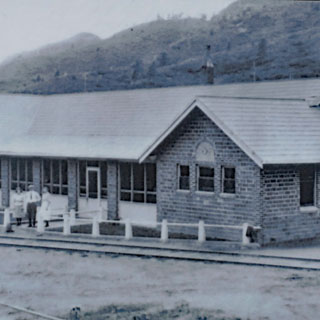
The Company Store.
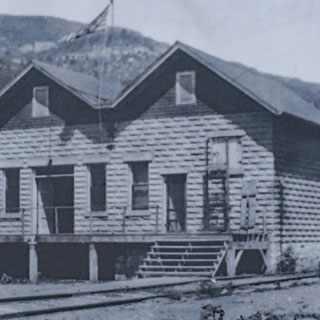
Homes. Look close and you'll see bits of the walls. The oven (below) was made by one of the miners for his wife to bake bread to sell to the other families.
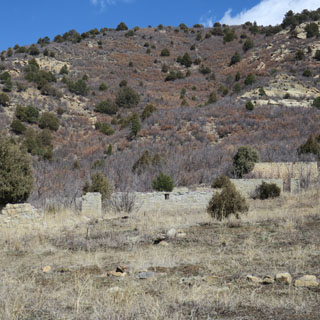
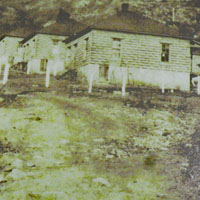

Today's view looking down from the level of the mines. The houses were on the slope between here and the bottom of the valley. Trains came up from the valley to load the coal.
Sugarite Mine, Entrance #2. The mines are all gated, but in any case, apparently the tunnels have collapsed.
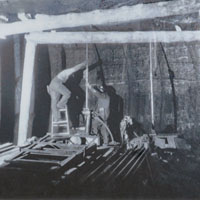
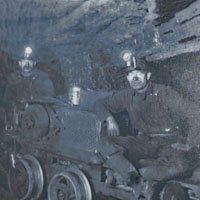
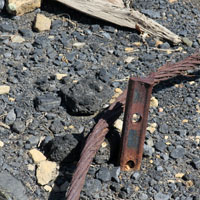
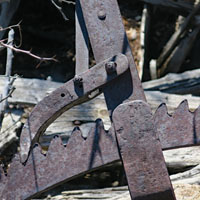
Part of the cable-winding equipment to lower the coal down the side of the valley to the waiting rail cars.
Coal was bagged and sold under the Swastika brand (being a common Sanskrit symbol for good-luck before being co-opted).
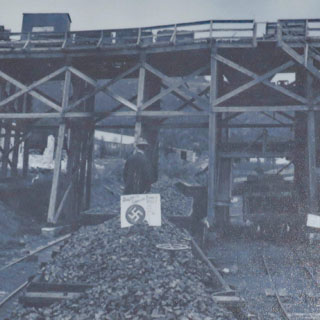
Not far east of the valley.
High-plains snowmelt is creating a rushing river.

